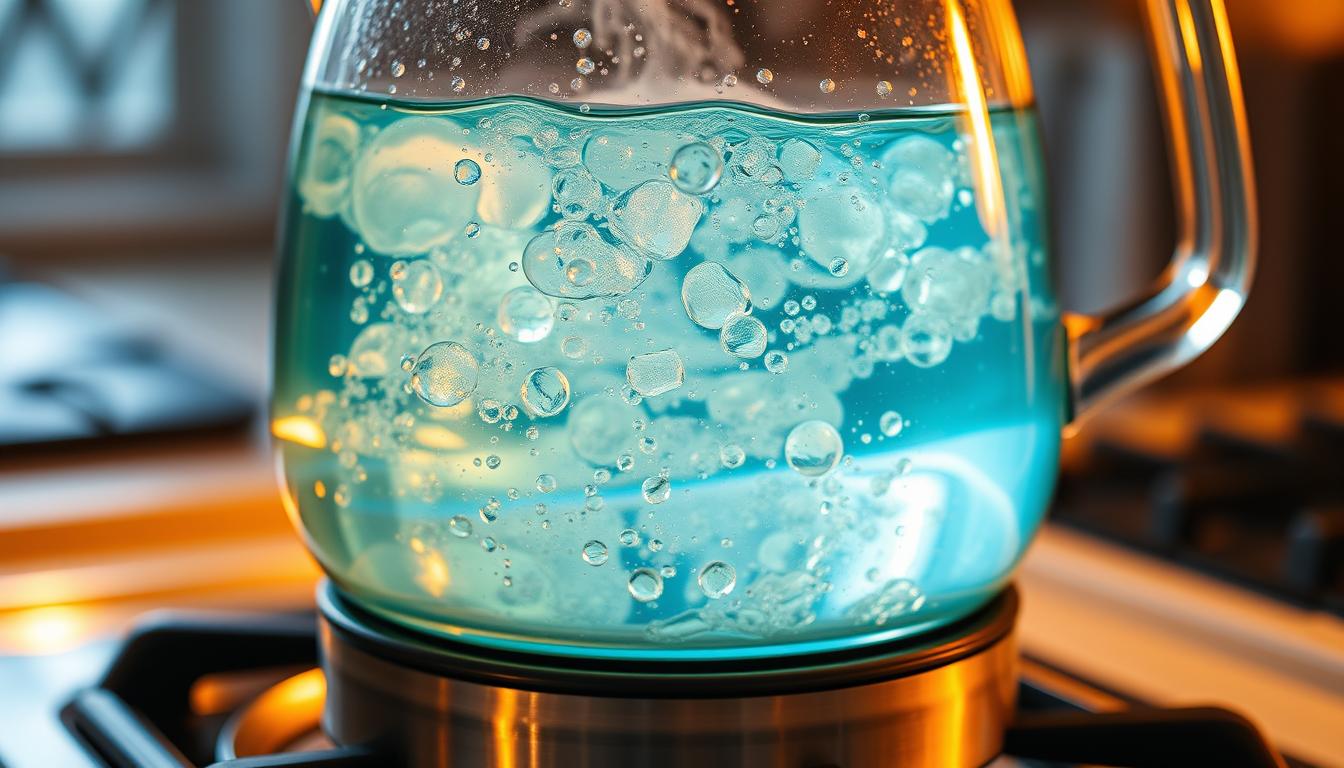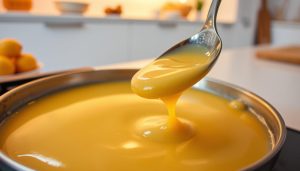Nearly 13 million American households rely on private wells containing contaminants boiling can’t remove. While heating liquids remains a trusted emergency tactic, most people don’t realize it leaves behind heavy metals, pesticides, and other dangerous substances.
Thermal treatment effectively neutralizes many biological threats. Pathogens like salmonella and norovirus become inactive once temperatures reach 149°F (65°C). However, this process doesn’t eliminate chemical pollutants or dissolved solids. For example, lead concentrations remain unchanged even after vigorous heating.
Public health guidelines recommend maintaining a rolling boil for one minute to ensure safety. At higher elevations, this increases to three minutes due to lower atmospheric pressure. These measures primarily target organisms causing cholera, giardia, and similar waterborne illnesses.
Key Takeaways
- Thermal treatment destroys most bacteria and viruses but doesn’t remove chemicals or heavy metals
- Effective disinfection requires maintaining specific temperatures for designated time periods
- Boiling serves as disinfection, not sterilization, leaving some microorganisms intact
- Altitude significantly impacts required heating durations for pathogen elimination
- Alternative purification methods become necessary for comprehensive contaminant removal
Understanding these distinctions helps you choose the right approach for different scenarios. Whether camping or facing infrastructure failures, knowing your options ensures safer consumption practices.
Understanding Boiling Water as a Disinfection Method
Heat-based purification has been used for centuries to combat waterborne diseases. Modern science reveals how thermal energy disrupts microorganisms at cellular levels. This process works even before liquids reach full boiling points.
How Thermal Energy Neutralizes Threats
Pathogens collapse when exposed to sustained heat. Their protein structures unravel, and cell membranes rupture. The World Health Organization confirms most bacteria die within seconds at 149°F (65°C) – temperatures achievable through simmering.
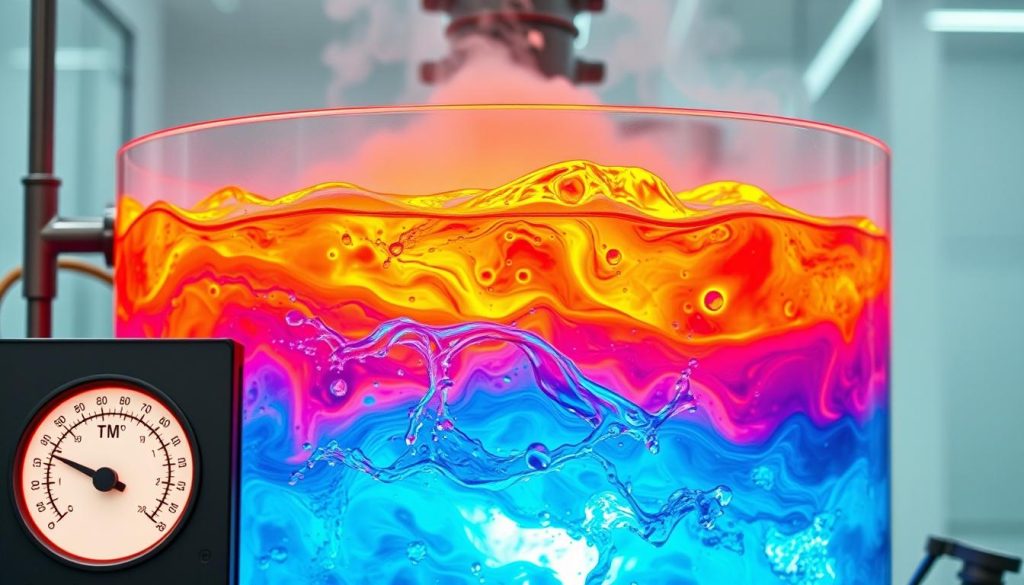
Viruses and protozoa require slightly higher temperatures. Thermal damage prevents reproduction, making microorganisms harmless. Unlike filtration, heat treatment leaves dead organisms in the liquid but removes infection risks.
Comparing Heat-Based Approaches
Pasteurization shares similarities with boiling but uses precise temperature control. Both methods achieve disinfection rather than complete sterilization. This distinction matters for applications like medical equipment versus emergency water treatment.
| Process | Temperature | Duration | Target Pathogens |
|---|---|---|---|
| Boiling | 212°F (100°C) | 1-3 minutes | Bacteria, viruses, protozoa |
| Pasteurization | 161°F (72°C) | 15 seconds | Salmonella, E. coli |
| Thermal Disinfection | 149°F (65°C) | 30 minutes | Most bacteria |
Municipal systems often combine heat with chemical treatments. For home use, boiling remains the most accessible method. It provides a safety margin beyond minimum requirements, ensuring effectiveness across various contamination scenarios.
Does Boiling Water Kill All Germs?
Pathogens threatening water safety often originate from surprising environmental sources. Agricultural runoff, cracked sewer lines, and stormwater overflows introduce dangerous microorganisms into supplies. Thermal disinfection remains a frontline defense against these biological threats.
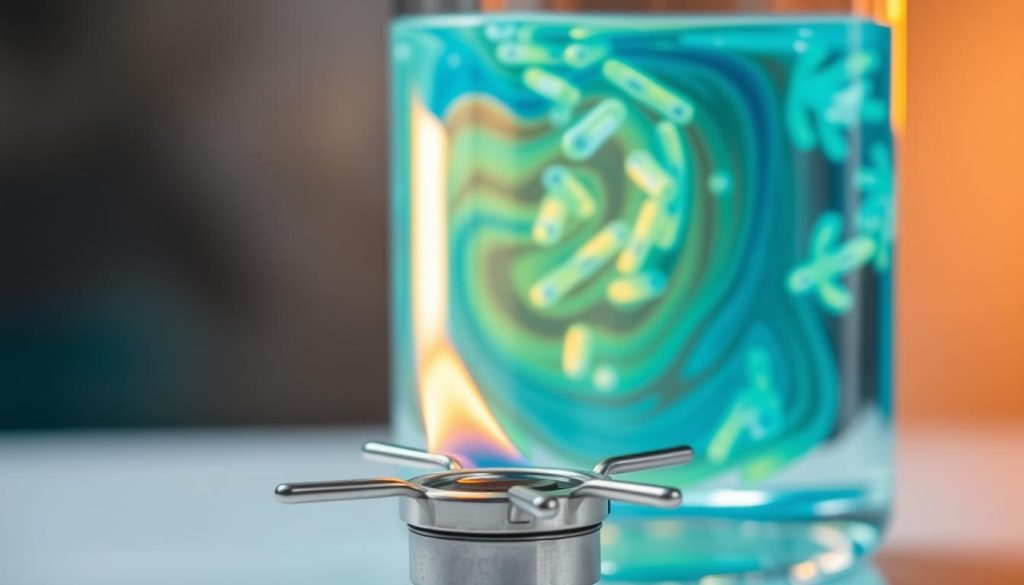
Microorganism Vulnerability to Heat
Common bacteria like E. coli and Salmonella die within seconds at 160°F. These organisms cause severe gastrointestinal distress when consumed. Viral threats including Hepatitis A and Polio become inactive through protein structure disruption during heating.
Parasites present unique challenges. Giardia cysts survive longer than bacteria but succumb after one minute of rolling boiling. Cryptosporidium, though heat-resistant, becomes non-infectious through proper thermal treatment. Contaminated ice and untreated wells frequently harbor these organisms.
| Pathogen Type | Critical Temperature | Elimination Time | Common Sources |
|---|---|---|---|
| Bacteria | 160°F (71°C) | 15 seconds | Animal waste, sewage |
| Viruses | 176°F (80°C) | 1 minute | Human feces, wastewater |
| Parasites | 212°F (100°C) | 3 minutes | Soil, surface water |
Elevation adjustments prove crucial. At 6,500 feet, extend boiling times to three minutes for complete disinfection. These measures address reduced atmospheric pressure impacting heat transfer efficiency.
While rare heat-resistant strains exist, they seldom appear in typical water sources. Proper thermal treatment neutralizes 99.9% of disease-causing microorganisms according to CDC guidelines. This makes boiling your most reliable emergency purification method against biological contaminants.
Proper Water Boiling Techniques at Home
Mastering home water treatment requires precision and understanding of thermal dynamics. Effective methods combine visual inspection with temperature control, particularly when dealing with questionable sources.
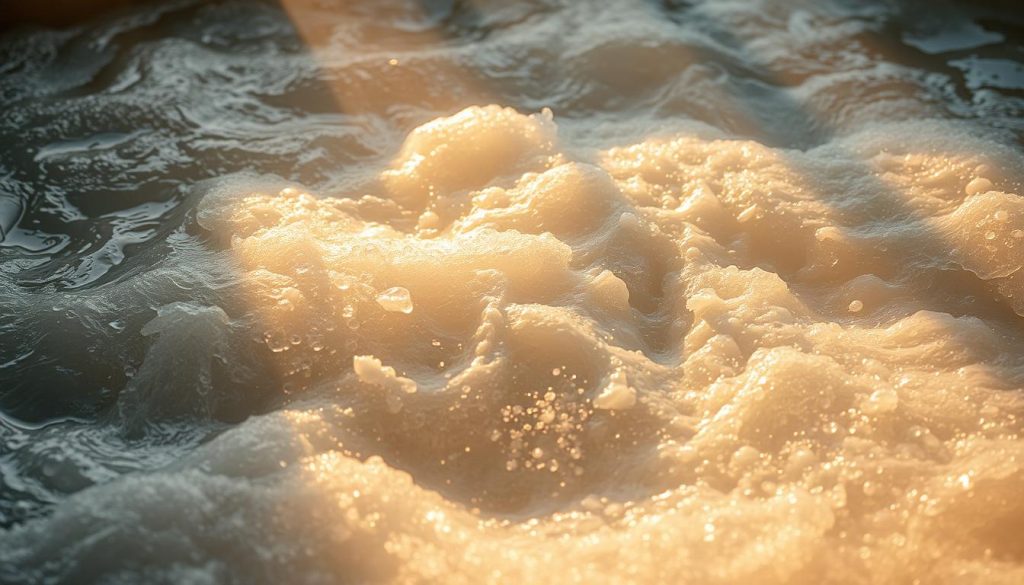
Step-by-Step Boiling Process
Begin by examining your liquid’s clarity. Cloudy samples need pre-treatment – pour through layered cheesecloth or coffee filters to remove sediment. This prevents scorching during heating and improves disinfection efficiency.
- Use a deep pot with lid to accelerate reaching 212°F
- Maintain vigorous bubbles for 60 seconds (sea level)
- Cool naturally without adding ice or untreated liquids
- Transfer to sanitized containers using clean utensils
Never reuse storage vessels that held unprocessed water. Glass or food-grade plastic works best for preserving purity.
Adjustments for High Elevation Areas
At 5,000+ feet elevation, extend boiling time to three full minutes. Reduced atmospheric pressure lowers water’s boiling point to 203°F at 7,500 feet – enough for disinfection but requiring longer exposure.
| Elevation | Minimum Time | Effective Against |
|---|---|---|
| 0-4,999 ft | 1 minute | Bacteria, viruses, parasites |
| 5,000+ ft | 3 minutes | Heat-resistant pathogens |
High-altitude hikers should carry portable thermometers. Verify temperatures reach at least 158°F for thirty seconds when fuel conservation becomes critical.
What Boiling Water Does Not Remove
While thermal treatment effectively handles biological threats, it leaves behind invisible chemical dangers. Many households face hidden risks from dissolved substances unaffected by heat exposure.
Chemical Contaminants and Heavy Metals
Heating liquids fails to eliminate toxic metals like lead and arsenic. These substances enter supplies through corroded pipes and industrial runoff. Unlike bacteria, they remain chemically stable even at high temperatures.
Common problematic substances include:
| Contaminant | Source | Health Impact |
|---|---|---|
| PFAS | Non-stick cookware | Cancer risk |
| Nitrates | Agricultural runoff | Blood disorders |
| Copper | Pipe corrosion | Liver damage |
| Pharmaceuticals | Wastewater | Hormone disruption |
Evaporation during heating creates a concentration effect. As liquid volume decreases, contaminant levels per ounce increase. This makes treated water potentially more hazardous than original sources.
“Boiling contaminated water can turn a mild problem into a severe health threat through pollutant concentration,” warns the EPA’s water quality division.
Metallic tastes or blue-green stains signal copper presence. Such visual clues help identify chemical issues thermal methods can’t fix. Always test supplies showing these signs before consumption.
For comprehensive protection, combine thermal treatment with activated carbon filters. This dual approach addresses both biological and chemical water quality concerns effectively.
Comparing Boiling Water to Filtration Methods
Choosing between thermal treatment and mechanical filtration depends on your specific contaminants and situation. Each method addresses different water quality concerns, with effectiveness varying by contaminant type and emergency context.
When to Use Boiling Versus Filtration
Thermal disinfection proves essential during power outages or when dealing with biological threats like pathogenic bacteria. It requires no specialized equipment – just heat and time. Filtration systems excel at removing chemicals and heavy metals that survive boiling.
Portable water filtration products work best for outdoor adventures where fuel sources are limited. They process larger volumes faster than boiling, but may not eliminate all viruses. Combine both methods when dealing with unknown contaminants in wilderness settings.
Municipal water systems using chlorine treatment still benefit from filtration for taste improvement. For cloudy tap water after storms, boiling remains the safest first response. Always test your source to determine which approach – or combination – delivers complete protection.
